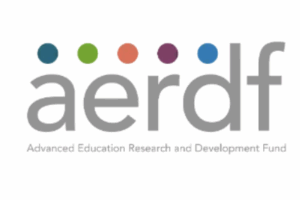AI Insights
xxxxai: Simplifying Artificial Intelligence for Every Business

Artificial Intelligence is no longer just a futuristic concept reserved for tech giants. From healthcare to finance and retail, AI has become an everyday tool that helps businesses operate smarter and faster. However, implementing AI has traditionally required massive budgets, specialized teams, and months of development time. That’s exactly what xxxxai is here to change.
xxxxai is a new-generation platform built to democratize AI, offering simple, no-code solutions that allow companies of any size to adopt intelligent automation without technical complexity.
This article explores what makes xxxxai unique, its practical applications, and how it’s helping organizations unlock the true value of artificial intelligence.
What is xxxxai?
xxxxai is an all-in-one platform that lets users build, train, and deploy machine learning models through an intuitive interface. Unlike traditional AI tools that demand extensive coding experience, xxxxai uses drag-and-drop workflows, pre-trained models, and robust integrations to make AI accessible to non-technical professionals.
Some of its standout features include:
✅ No-Code and Low-Code Tools:
Even business analysts and marketers can design AI workflows without writing a single line of code.
✅ Pre-Built Models:
Ready-to-use templates for image recognition, text analysis, predictive forecasting, and more.
✅ Custom Model Training:
Upload your data to train AI models tailored to your business needs.
✅ Real-Time Dashboards:
Visualize insights and performance metrics instantly.
✅ API Integrations:
Connect xxxxai to CRMs, ERPs, and cloud data warehouses for seamless workflows.
Why is xxxxai Gaining Attention?
Several trends are driving xxxxai’s popularity:
✅ Accessibility:
Small and mid-sized businesses can now use AI affordably without hiring data science teams.
✅ Speed:
Traditional AI projects often take months or years to deliver value. xxxxai cuts implementation time to weeks or even days.
✅ Flexibility:
Businesses can combine no-code tools with custom scripting when needed.
✅ Scalability:
From pilot projects to enterprise-wide deployments, xxxxai grows as your needs evolve.
These advantages make it a strong choice for companies who want to stay competitive without massive upfront investments.
Key Use Cases of xxxxai
1. Predictive Analytics:
Retailers forecast demand and optimize inventory with AI-powered models.
2. Customer Support Automation:
Businesses deploy chatbots and virtual assistants to handle common queries around the clock.
3. Fraud Detection:
Banks and fintech companies use xxxxai to monitor transactions and flag suspicious activity in real time.
4. Healthcare Insights:
Hospitals analyze patient data to predict risks, improve care, and reduce costs.
5. Marketing Optimization:
Brands leverage sentiment analysis and predictive scoring to tailor campaigns more effectively.
Whatever the industry, xxxxai offers ready-made solutions that help save time and improve decision-making.
xxxxai vs. Traditional AI Solutions
Traditional AI development is expensive and slow:
Specialized Talent Required:
Data scientists, machine learning engineers, and DevOps teams.
Complex Infrastructure:
Custom-built environments, high-performance computing clusters.
Long Development Cycles:
Often 6–12 months to see usable results.
High Costs:
Large investments in software, hardware, and people.
In contrast, xxxxai offers:
✅ Simplicity:
No-code tools make it usable by almost any business function.
✅ Affordability:
Subscription-based pricing scales with usage.
✅ Speed to Market:
Deploy models in days or weeks.
✅ Ongoing Updates:
The platform continuously evolves with new features.
Challenges to Consider
While xxxxai provides immense advantages, there are important considerations to address:
⚠️ Data Privacy and Security:
Companies must comply with regulations like GDPR and HIPAA when using AI on sensitive data.
⚠️ Model Bias:
All AI is only as good as the data it’s trained on. Biases in your data can lead to skewed results.
⚠️ Change Management:
Teams need training and support to adopt AI successfully.
xxxxai offers documentation, tutorials, and expert guidance to help navigate these challenges effectively.
The Future of xxxxai
The roadmap for xxxxai is full of exciting developments:
✅ Edge AI Capabilities:
Run AI models directly on devices for faster processing and improved privacy.
✅ Multilingual Natural Language Processing:
Expanded support for over 40 languages.
✅ AI Model Marketplace:
A growing library of pre-trained models you can integrate instantly.
✅ Advanced Explainability Tools:
New features to help non-technical users understand why the AI makes specific predictions.
These innovations will strengthen xxxxai’s position as a leader in accessible AI solutions.
Conclusion
AI is no longer just a buzzword—it’s the foundation of modern business strategy. Whether you’re a startup or a global enterprise, xxxxai offers a clear, cost-effective path to integrating intelligent automation.
With no-code tools, fast deployment, and scalable architecture, xxxxai empowers organizations to predict trends, improve operations, and deliver better customer experiences. If you’re ready to embrace AI without the steep learning curve, xxxxai is a platform worth exploring.
AI Insights
Artificial intelligence helps break barriers for Hispanic homeownership

For many Hispanics the road to homeownership is filled with obstacles, including loan officers who don’t speak Spanish or aren’t familiar with buyers who may not fit the boxes of a traditional mortgage applicant.
Some mortgage experts are turning to artificial intelligence to bridge the gap. They want AI to help loan officers find the best lender for a potential homeowner’s specific situation, while explaining the process clearly and navigating residency, visa or income requirements.
This new use of a bilingual AI has the potential to better serve homebuyers in Hispanic and other underrepresented communities. And it’s launching as federal housing agencies have begun to switch to English-only services, part of President Donald Trump’s push to make it the official language of the United States. His executive order in August called the change a way to “reinforce shared national values, and create a more cohesive and efficient society.”
The number of limited-English households tripled over the past four decades, according to the Urban Institute, a nonprofit research organization based in Washington, D.C. The institute says these households struggle to navigate the mortgage process, making it difficult for them to own a home, which is a key factor in building generational wealth.
The nonprofit Hispanic Organization of Mortgage Experts launched an AI platform built on ChatGPT last week, which lets loan officers and mortgage professionals quickly search the requirements of more than 150 lenders, instead of having to contact them individually.
The system, called Wholesale Search, uses an internal database that gives customized options for each buyer. HOME also offers a training program for loan officers called Home Certified with self-paced classes on topics like income and credit analysis, compliance rules and intercultural communication.
Cubie Hernandez, the organization’s chief technology and learning officer, said the goal is to help families have confidence during the mortgage process while pushing the industry to modernize. “Education is the gateway to opportunity,” he said.
HOME founder Rogelio Goertzen said the platform is designed to handle complicated cases like borrowers without a Social Security number, having little to no credit history, or being in the U.S. on a visa.
Loan officer Danny Velazquez of GFL Capital said the platform has changed his work. Before, he had to contact 70 lenders one by one, wait for answers and sometimes learn later that they wouldn’t accept the buyer’s situation.
The AI tool lets him see requirements in one place, narrow the list and streamline the application. “I am just able to make the process faster and get them the house,” Velazquez said.
One of Velazquez’s recent clients was Heriberto Blanco-Joya, 38, who bought his first home this year in Las Vegas. Spanish is Blanco-Joya’s first language, so he and his wife expected the process to be confusing.
Velazquez told him exactly what paperwork he needed, explained whether his credit score was enough to buy a home, and answered questions quickly.
“He provided me all the information I needed to buy,” Blanco-Joya said. “The process was pleasant and simple.”
From their first meeting to closing day took about six weeks.
Mortgage experts and the platform’s creators acknowledge that artificial intelligence creates new risks. Families rely on accurate answers about loans, immigration status and credit requirements. If AI gives wrong information, the consequences could be serious.
Goertzen, the CEO of HOME, said his organization works to reduce errors by having the AI pull information directly from lenders and loan officers. The platform’s database is updated whenever new loan products appear, and users can flag any problems to the developers.
“When there are things that are incorrect, we are constantly correcting it,” Goertzen said. “AI is a great tool, but it doesn’t replace that human element of professionalism, and that is why we are constantly tweaking and making sure it is correct.”
Jay Rodriguez, a mortgage broker at Arbor Financial Group, said figuring out the nuances of different investors’ requirements can mean the difference between turning a family away and getting them approved.
Rodriguez said HOME’s AI platform is especially helpful for training new loan officers and for coaching teams on how to better serve their communities.
Better Home & Finance Holding Company, an AI-powered mortgage lender, has created an AI platform called Tinman. It helps loan officers find lenders for borrowers who have non-traditional income or documents, which is common among small business owners.
They also built a voice-based assistant called Betsy that manages more than 127,000 borrower interactions each month. A Spanish-language version is in development.
“Financial literacy can be challenging for Hispanic borrowers or borrowers in other underserved populations,” Pierce said. “Tools like Betsy can interact and engage with customers in a way that feels supportive and not judgmental.”
AI Insights
Artificial intelligence helps break barriers for Hispanic homeownership – The Killeen Daily Herald

Artificial intelligence helps break barriers for Hispanic homeownership The Killeen Daily Herald
Source link
AI Insights
Artificial intelligence helps break barriers for Hispanic homeownership – Richmond Register
-

 Business6 days ago
Business6 days agoThe Guardian view on Trump and the Fed: independence is no substitute for accountability | Editorial
-
Tools & Platforms3 weeks ago
Building Trust in Military AI Starts with Opening the Black Box – War on the Rocks
-

 Ethics & Policy1 month ago
Ethics & Policy1 month agoSDAIA Supports Saudi Arabia’s Leadership in Shaping Global AI Ethics, Policy, and Research – وكالة الأنباء السعودية
-

 Events & Conferences4 months ago
Events & Conferences4 months agoJourney to 1000 models: Scaling Instagram’s recommendation system
-

 Jobs & Careers2 months ago
Jobs & Careers2 months agoMumbai-based Perplexity Alternative Has 60k+ Users Without Funding
-

 Education2 months ago
Education2 months agoVEX Robotics launches AI-powered classroom robotics system
-

 Funding & Business2 months ago
Funding & Business2 months agoKayak and Expedia race to build AI travel agents that turn social posts into itineraries
-

 Podcasts & Talks2 months ago
Podcasts & Talks2 months agoHappy 4th of July! 🎆 Made with Veo 3 in Gemini
-

 Podcasts & Talks2 months ago
Podcasts & Talks2 months agoOpenAI 🤝 @teamganassi
-

 Education2 months ago
Education2 months agoAERDF highlights the latest PreK-12 discoveries and inventions






















